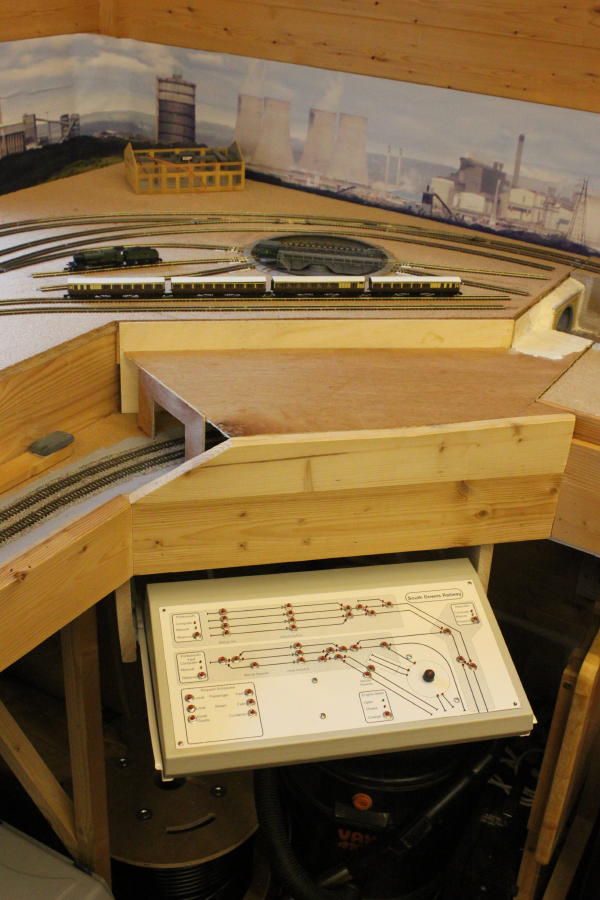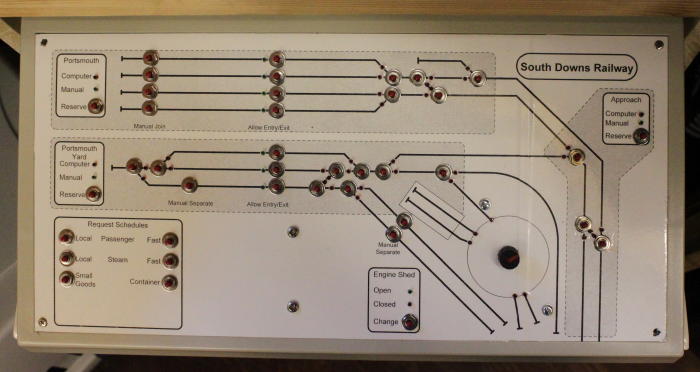Portsmouth has a terminus station, a container depot and an engine shed all of which need manual operations as well as automated train operations. Traincontroller will deliver trains to and from the platforms, and take them away; but if the engine needs to be swapped, that's a manual operation. The DTM30 was designed for purposes such as this.
The control panel (just) fits inot a single DTM30; all of its cells are used. We've also integrated the rotary controller for the TXC1 turntable controller into the panel, forming a single point of control for the whole area. DTM30 cells are used for four purposes:
- To control points and display their current positions.
- To interlock with Traincontroller, so that track is used for manually controlled operations OR computer controlled ones but not both. There are 3 separate interlock zones of track - the station, the yard & engine shed, and the approach.
- To signal availability of the "roads" that Traincontroller can send trains to and from. This needs persistent (latching) sensor messages.
- To request Traincontroller to perform certain operations (e.g. separate a train set, ir initiate a schedule). This needs momentary sensor messages.
The finished panel mounts just under the baseboard on drawer runners from B&Q. That allows the panel to be put away under the railway when not in use, but to be simply pulled out when needed.
The panel was drawn using visio and laser printed onto sticky back plastic. This has worked well for me before but this time the toner didn't adhere well. I've used clear fablon over the top to protect it.


